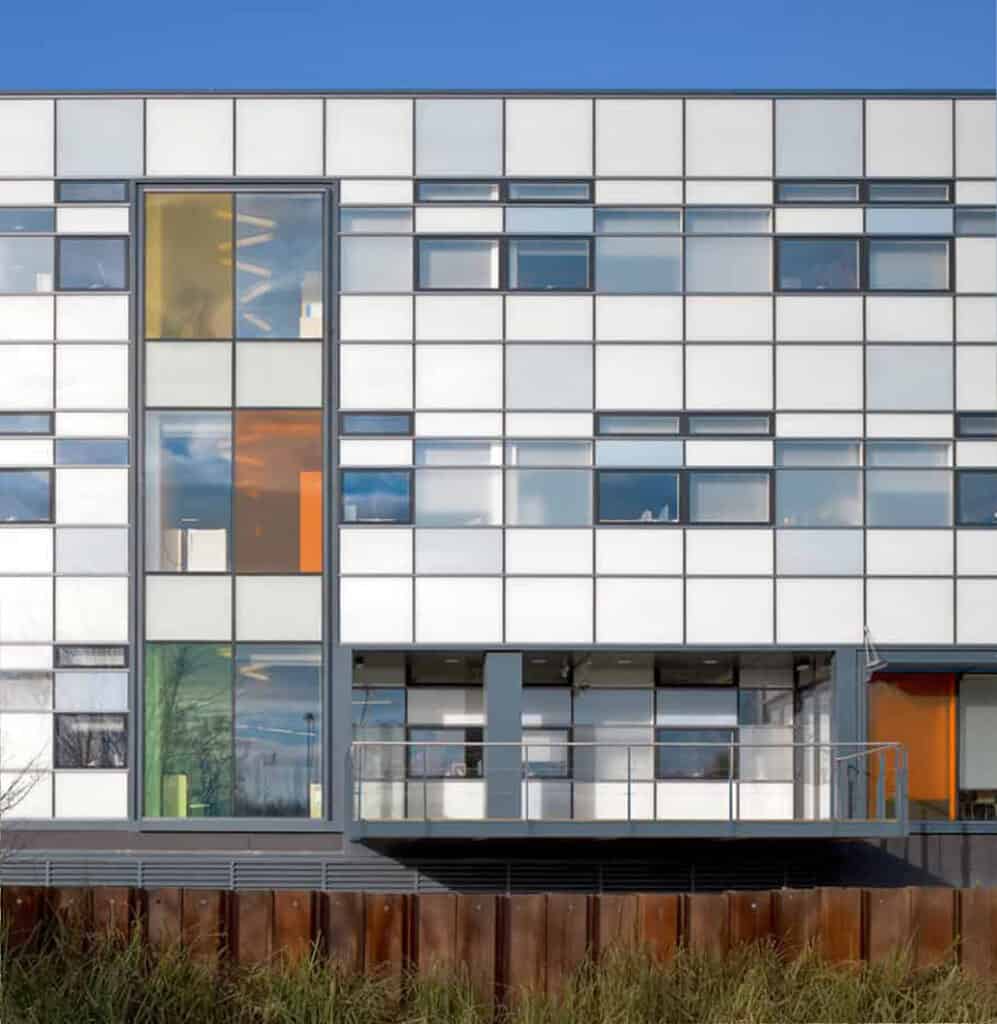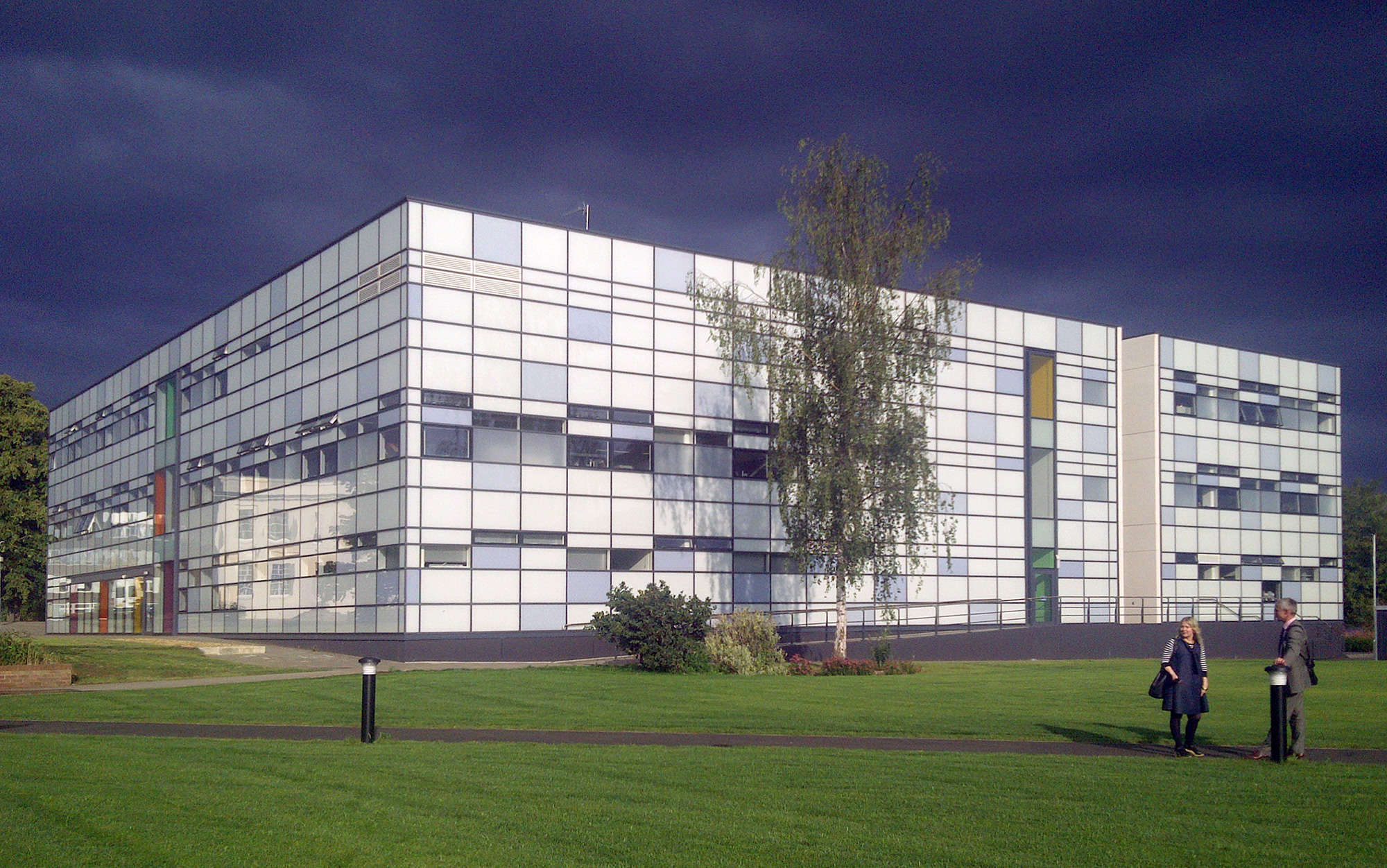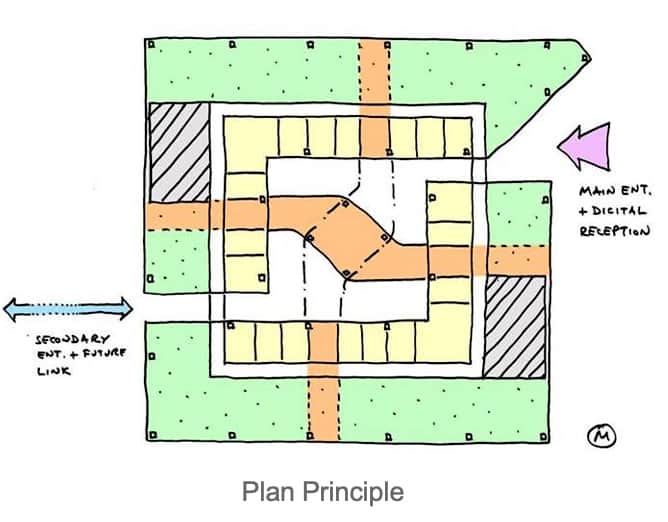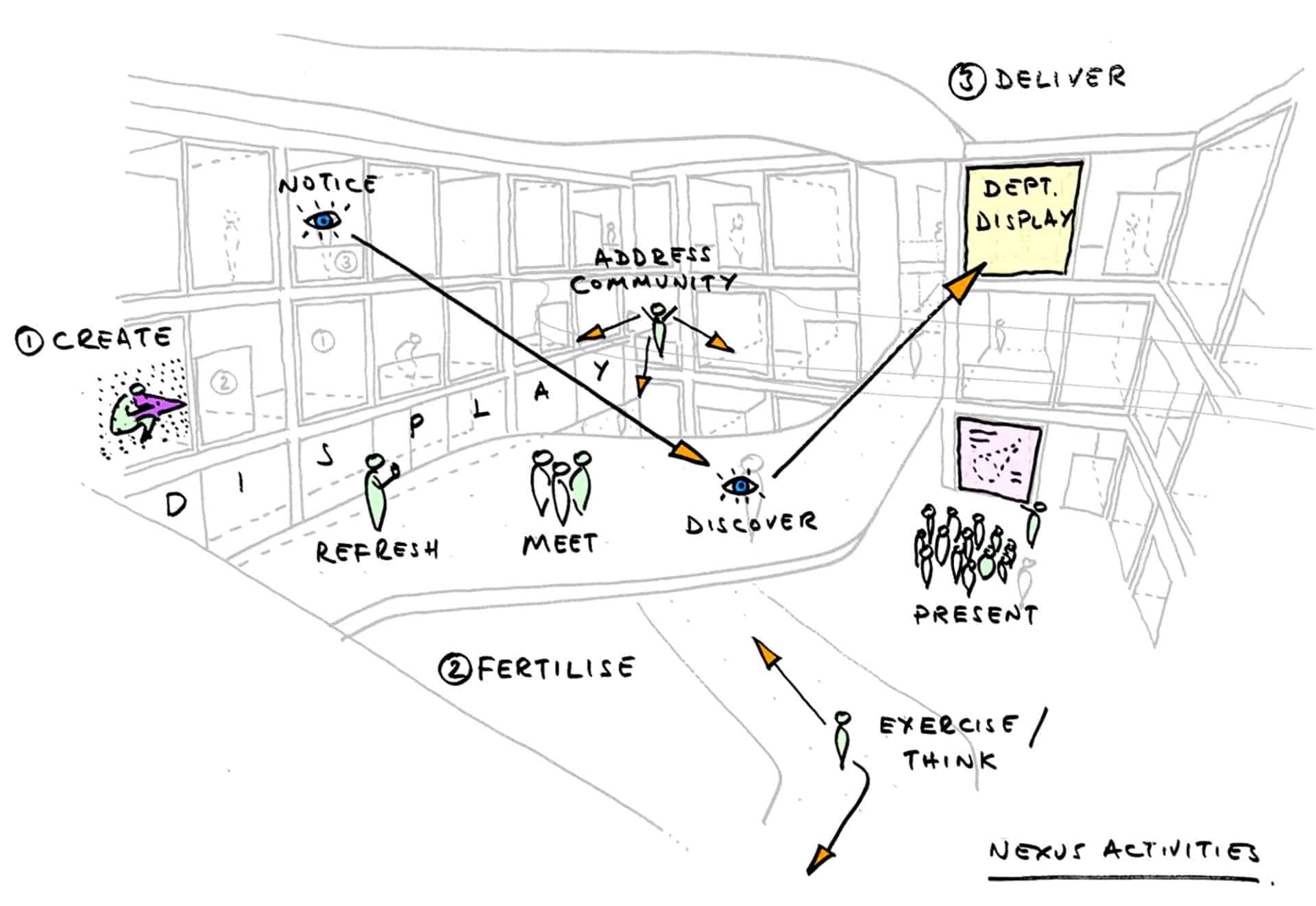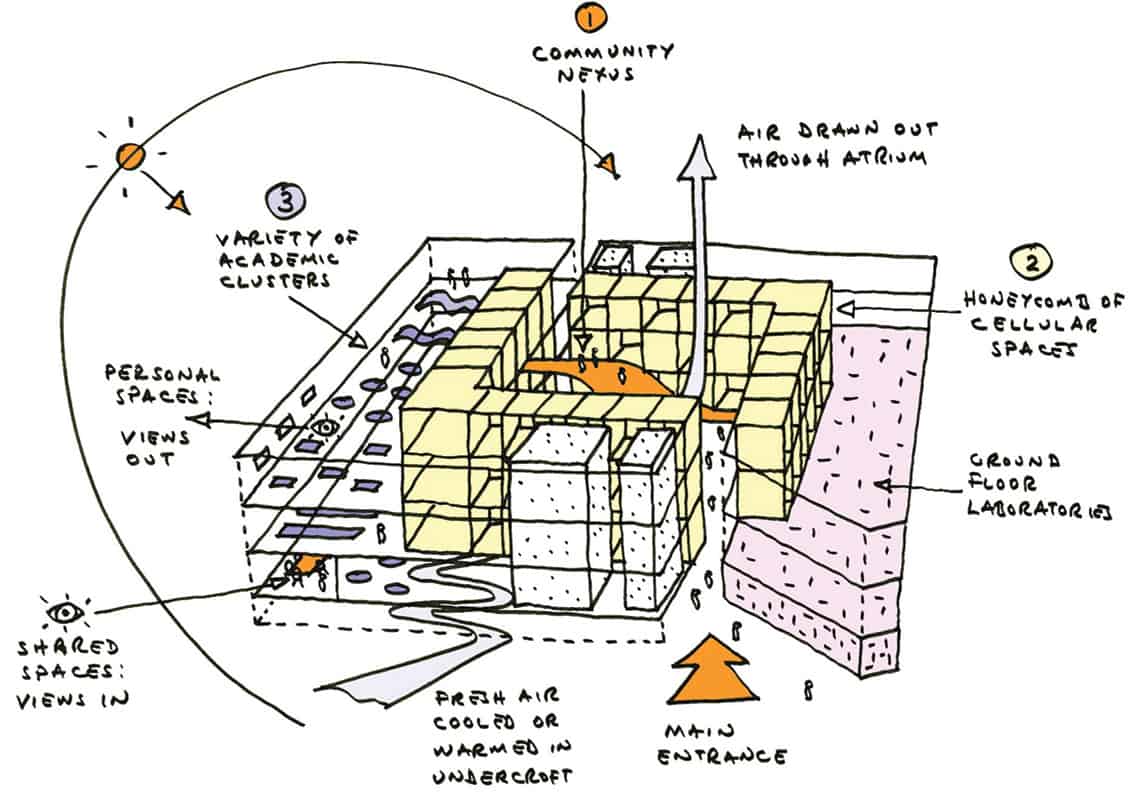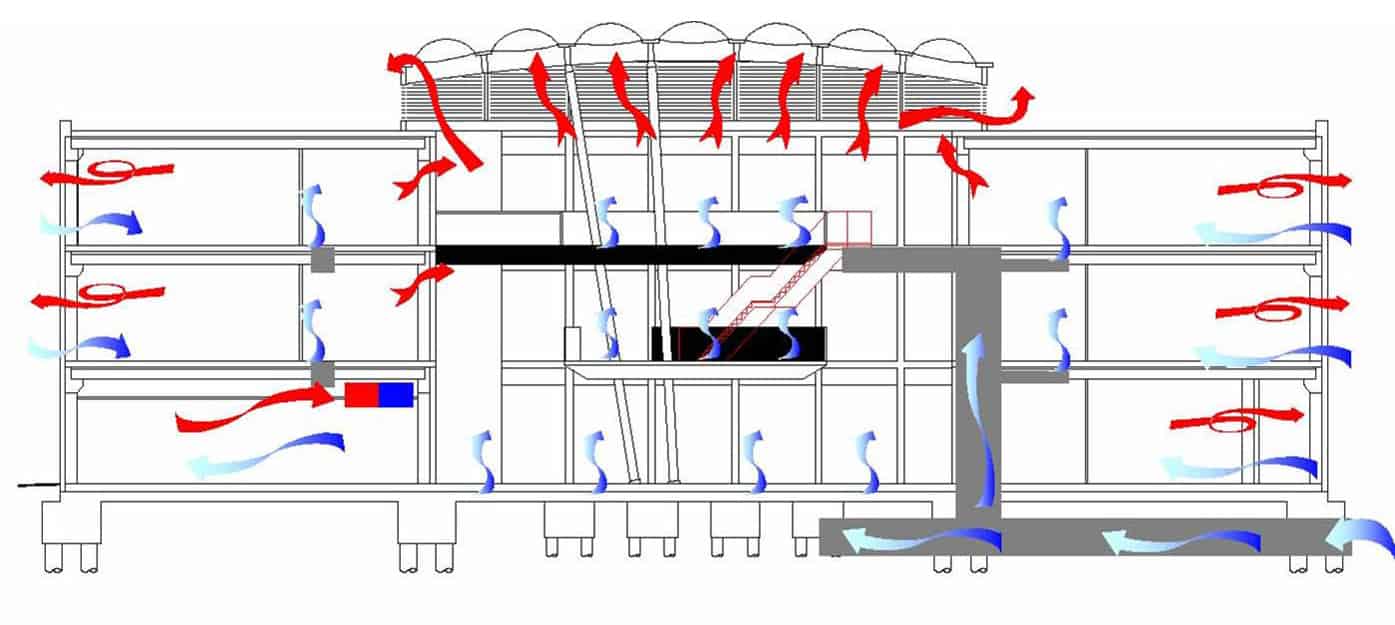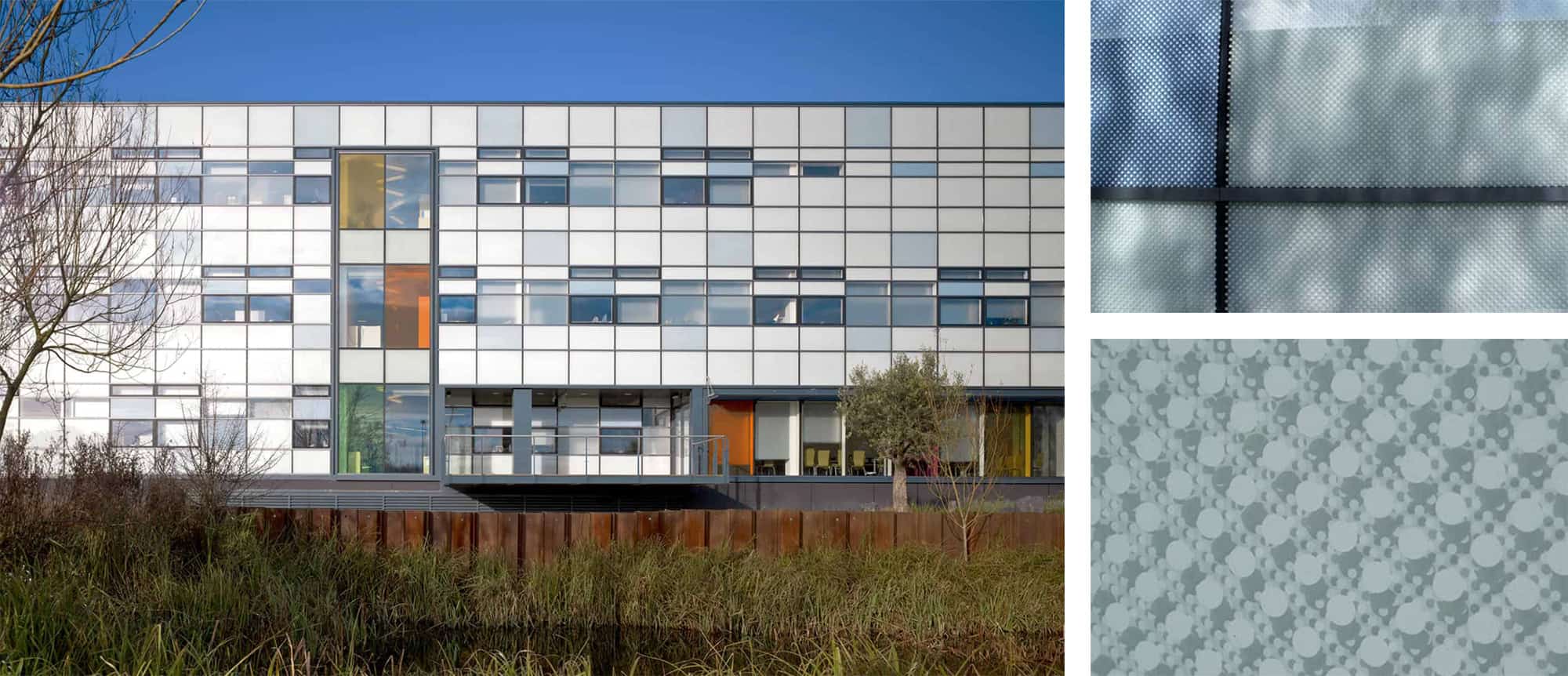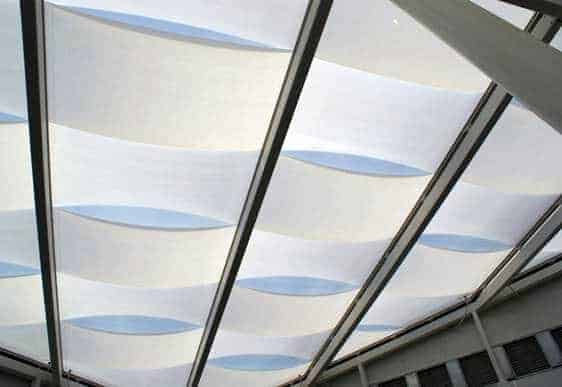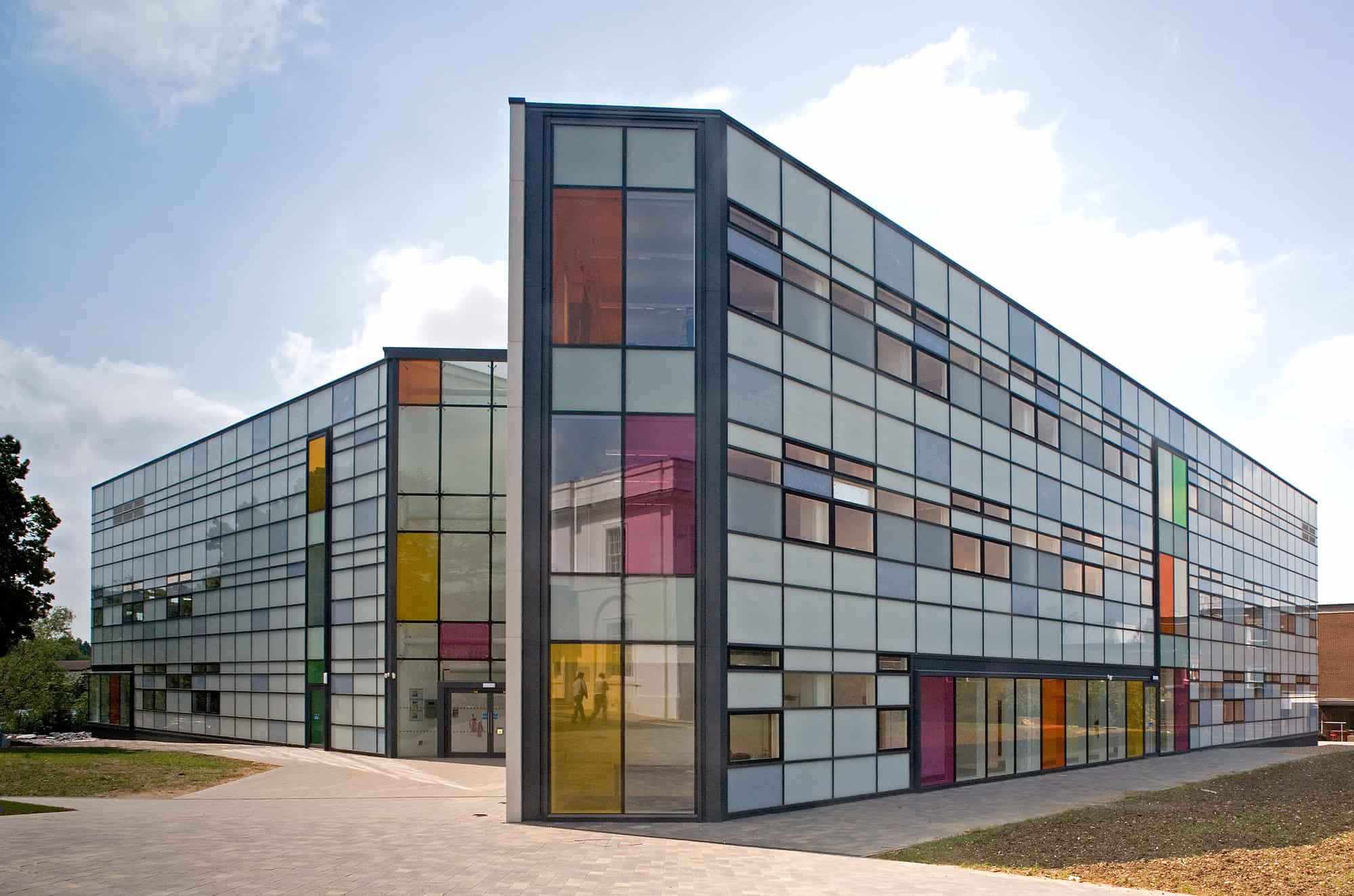Sustainability Reflections / 3
This is the third in a series of reflections on our past sustainable projects across a range of sectors, this time for a new University building for the Open University in Milton Keynes.
The Jennie Lee Building was won in competition in 2005 and completed in 2008, and designed with innovative passive sustainable measures as key drivers alongside wellbeing and academic interactivity, blending a variety of agile workspaces with the natural benefits of fresh air, daylight, volume, colour, biodiversity and comfort.
The building is arranged as an outer ring of open team and individual honeycomb spaces around a socially enabled atrium to maximise activity choices, passive cooling and ventilation opportunities.
The outer ring is of open spaces for academic clusters using single sided natural ventilation. Inner spaces use a passive concrete undercroft cooling and warming system in the foundations supplying fresh air to inner honeycomb spaces, as well as the atrium. This is enhanced by the stack effect of the ventilated skylight. This omitted the need for air conditioning in 90% of the building, minimising its carbon footprint, capital and operational costs, whilst creating a natural wellbeing environment. AC was provided for a lab and a meeting room on the South.
The structural frame and floor slabs are pre cast concrete, which is exposed for its thermal mass for night time cooling and temperature moderation.
The external façade has 35% clear or translucent glazed openings avoiding external solar protection but delivering excellent daylight penetration. The remaining 65% is a fully insulted and airtight triple glazed spandrel panel stick system, including a layered and varied scale dot frit to create a soft glass feel on approach that reflects solar energy, that sharpens to a delicate material texture up close.
The atrium roof is a folded form made up of translucent ETFE air cushions within a steel frame, allowing daylight to the atrium and the honeycomb. The cushions are lightweight reducing loads and providing solar protection through the soft white translucent panels and dot frits. The white translucent panels are laid alternately top side and underside creating the effect of woven white strips.
Biodiversity was also a key driver, with natural landscape features enhanced around the footprint including a diverse pond ecosystem that supports a community of the protected Great Crested Newt.
Project Team :
Client – Open University
Architect – Aukett Swanke
Contractor – Galliford Try
Structural Engineer – Buro Happold
MEP – Buro Happold
QS – Ridge
Landscape Architects – Gillespies
